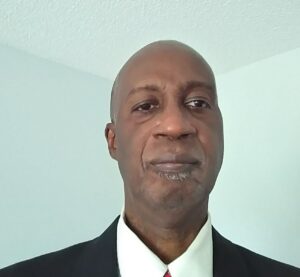
Mr Keith Maynard entered Trinity College in 1964 and during his entire tenure was consistently placed at the top of his class. In 1969, he attempted an unprecedented nine(9) GCE ‘O’ Level subjects passing all of them, most with distinction. In 1971 he obtained ‘A’ Level passes in Math and Chemistry from Trinity College but elected to repeated ‘A’ Levels at St Mary’s College in 1972 where he won an Island scholarship. He then entered the University of Toronto where, in 1976, he obtained a Bachelor of Applied Science(Hons) with a major in Nuclear and Thermal Power Engineering.
He had a successful career in software development, working for such Fortune 500 companies as AT&T, Delta Airlines, and Ameritech. He was a lead engineer at Ameritech where he managed a project to develop and install call centre software which was deployed simultaneously in one greenfield installation in Chicago and one live centre in Detroit. While at Delta he was responsible for introducing CTI technology to the company thus allowing it to shave seconds off of calls. This resulted in great savings in telephone charges and improved responsiveness to customer inquiries. He also was the lead in developing their first speech recognition application which allowed customers to search for flight details using natural language.
Mr Maynard was always a music lover. He taught himself to read and arrange music and to play such instruments as the guitar, the piano and the tenor pan. He was the arranger for the first steel orchestra formed at Trinity College.
In 1981 he was hired at CARIRI to join a steelpan research project. Together with Richard Mc David, he identified a potential method for ‘sinking and grooving’ tenor pans using fluid-form pressing. He travelled to Sweden to set up a die to perform testing of this method using a variety of metals. However, it was his love of the pan that in 1986 lead him to develop the first prototype of an electronic pan.
This prototype formed the basis for further development work at the Engineering Institute of the UWI which led to the creation of the Percussive Harmonic Instrument (PHI), an electronic synthesizer for pan. The PHI merged the powerful facility of the Musical Instrument Device Interface (MIDI) with a physical form inspired by the traditional spider-web tenor pan.
A few of the many features of the PHI are:
● Itisanelectronicinstrumentcreatedforpannists.
● Ithasalltheadvantagesofanelectronicinstrumentsuchas ease of amplification, recording, editing etc
● Itgiveseasyaccesstoaninfiniterangeofinstrumentvoicesincluding all ranges of steelpans, wind and percussion instruments, etc. This means that as few as four players with PHI instruments can simulate an ensemble, an orchestra or an entire steelband.
● Itisportable,mucheasiertomovearoundthanasix-bass.
● It eliminates the challenges of having to find a tuner to keep a physical instrument in tune.
The PHI adds a new dimension to our traditional steelpan and for this invention, Mr Maynard and three other individuals now hold patents in several countries including Trinidad and Tobago, the US, Canada, Japan and the European Union. The PHI is now used by several local and international performers, including Len ‘Boogsie’ Sharpe, Ken ‘Professor’ Philmore and Rhapsody band. Mr Sharpe has also produced a CD which was entirely recorded using the PHI.
Mr Maynard has recently undertaken the challenge to completely revamp the TCAA website making it more interactive, providing for alumni to easily register to the alumni database. He is currently working on a donation page to allow members to easily make their financial contributions directly to the TCAA or to any Trinity College projects of their choice from the convenience of their web-enabled devices.
The Trinity College Alumni Association acknowledges Mr Keith Maynard for his work in software development, for his contribution to
the improvement of the steelpan and for his contribution to the technological development of the TCAA and proudly admits him to its Hall of Fame.